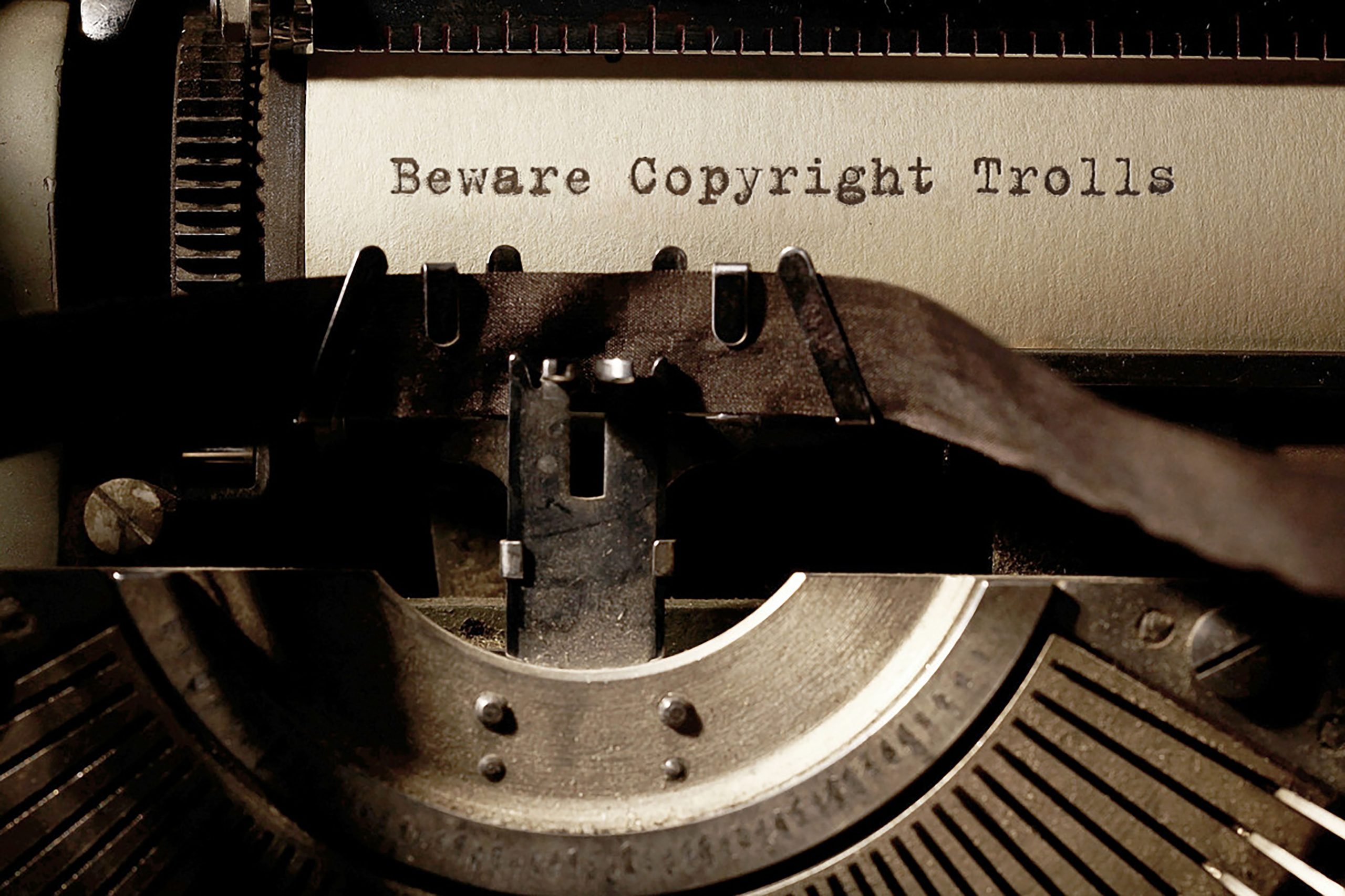
Emotional Distress – Litigation – Copyright Infringement
Be Aware of Copyright Trolls: Safeguard Your Content with Picdefence.io
Content creation and distribution have become easier than ever. However, with the convenience of sharing information online comes the risk of copyright infringement and the rise of copyright trolls. These individuals or entities aggressively pursue alleged copyright violations, often through automated tools that scan the internet for potentially infringing content.
To protect your website from copyright trolls and ensure that your content remains secure, it’s crucial to be proactive and vigilant. One effective way to stay ahead of the game is by utilizing tools like picdefence.io, an app designed to scan your site in bulk for potential copyright infringements.
Understanding the Threat of Copyright Trolls
Copyright trolls are entities that exploit copyright laws for financial gain. They typically target website owners and content creators, sending legal threats and demanding settlement payments for alleged copyright infringements. These trolls often use automated systems to scan the internet for images and content that may violate copyright laws.
As a website owner, it’s essential to be aware of the potential risks and take proactive measures to protect your content and your business.
The Role of Picdefence.io in Bulk Scanning
Picdefence.io is a powerful tool that can help you proactively scan your website for potential copyright infringements. This app allows you to perform bulk scans, checking multiple pages and images simultaneously. By leveraging advanced algorithms, picdefence.io identifies images that may be subject to copyright claims, helping you take prompt action to address any issues.
The bulk scanning feature of picdefence.io is particularly useful for website owners with extensive content libraries. Instead of manually checking each image, which can be time-consuming and impractical, you can use picdefence.io to streamline the process and identify potential copyright violations efficiently.
Verifying Hyperlinks: A Crucial Step in Copyright Protection
While picdefence.io can help identify potential copyright infringements related to images, it’s equally important to check the hyperlinks on your website. Copyright trolls may exploit broken or inactive links to target website owners, claiming that the content linked to them was unauthorized.
Regularly check the hyperlinks on your site to ensure they are active and live on search engines. This proactive approach can help you identify and rectify any broken links before copyright trolls have the chance to exploit them.
How to Use Picdefence.io for Bulk Scanning
Using picdefence.io is a straightforward process:
- Sign up for an account: Create an account on the picdefence.io platform.
- Upload your content: Bulk uploads your images or provide the URLs of the pages you want to scan.
- Initiate the scan: Start the scanning process and let picdefence.io analyze your content.
- Review the results: Examine the scan results and identify potential copyright infringements.
- Take action: If any issues are detected, take prompt action to address them, whether it involves removing the content, obtaining proper licenses, or seeking legal advice.
Is Copyright Trolling Unethical and Illegal
The practice of copyright trolling is often considered unethical, and it can sometimes involve legal strategies that are controversial. Copyright trolling typically refers to the aggressive enforcement of copyright claims for financial gain rather than a genuine interest in protecting intellectual property rights.
Here are some reasons why copyright trolling is often viewed as unethical:
- Abuse of Legal System: Copyright trolls often send mass notices alleging copyright infringement without thoroughly investigating the circumstances. This can lead to the abuse of the legal system and result in unjust claims against individuals or businesses.
- Extortionate Tactics: In some cases, copyright trolls use the threat of legal action and the potential for hefty fines to coerce individuals or businesses into settling, even if the claims may lack merit. This can be seen as a form of extortion.
- Lack of Genuine Interest in Protection: Copyright trolls are typically not interested in protecting the integrity of creative works; instead, they focus on exploiting legal mechanisms to generate revenue through settlements.
- Automated Scanning and False Positives: Copyright trolls often use automated tools to scan the internet for potential infringements. This can lead to false positives, where legitimate uses of copyrighted material are flagged as infringements.
While copyright trolling may be considered unethical, its legality can vary depending on the jurisdiction and the specific actions taken by copyright trolls. In some cases, the legal system has intervened to curb abusive practices associated with copyright trolling.
However, it’s important to note that legitimate copyright enforcement, where creators or rights holders seek to protect their intellectual property, is a lawful and necessary aspect of intellectual property rights. The key distinction lies in the intent and methods employed. Legitimate copyright enforcement aims to protect creative works and maintain the rights granted to the copyright holder without engaging in exploitative or predatory practices.
As laws surrounding copyright and intellectual property can be complex and subject to change, seeking legal advice is advisable for anyone facing copyright claims or considering legal action in response to alleged infringement.
Understanding the Importance of Backlinking Images to the Source
In the dynamic landscape of digital content, the ethical use and proper attribution of images are integral aspects of responsible content creation. Backlinking images to their sources not only demonstrates a commitment to respecting intellectual property rights but also enhances transparency and credibility. In this article, we’ll delve into the significance of backlinking images and explore how this practice contributes to a more ethical and informed online environment.
Acknowledging the Source: A Mark of Respect
When you include images in your content, it’s crucial to recognize and acknowledge the original creators or rights holders. Backlinking an image to its source is a simple yet effective way to provide proper attribution. This not only shows respect for the work of others but also allows your audience to explore more content from the creators, fostering a sense of collaboration within the digital community.
Building Credibility and Trust
Credibility is a currency in the digital realm, and users are increasingly discerning about the sources of information they consume. When you backlink images to their sources, you add a layer of transparency to your content. This transparency, in turn, builds trust with your audience. By openly sharing where you’ve obtained images, you showcase a commitment to authenticity and responsible content practices.
Avoiding Copyright Issues
Backlinking images to their sources helps mitigate the risk of copyright infringement. It serves as evidence that you are not claiming ownership of the images and that you are providing proper attribution. In cases where images are licensed under specific terms, adhering to those terms and including appropriate backlinks ensures compliance and protects you from potential legal issues related to unauthorized use.
Enhancing User Experience
Incorporating backlinks to image sources contributes to a richer user experience. Interested readers can easily navigate to the original content, gaining access to additional context, related information, or more work from the creator. This creates a more engaging and informative experience for your audience, fostering a positive perception of your content.
How to Backlink Images to the Source
- Obtain the Image URL: Ensure you have the direct URL of the image you want to use.
- Create the Backlink: Use the following markdown code to backlink the image to its source. markdown Copy code
[](source-url)Replace “Alt text” with a brief description of the image, “image-url” with the URL of the image, and “source-url” with the URL of the image source. For example:markdown Copy code[](http://www.photographer-portfolio.com) - Test the Link: Before publishing your content, test the link to ensure it directs users to the intended source.
By consistently backlinking images to their sources, you contribute to a culture of ethical content sharing, support the creative community, and demonstrate a commitment to responsible digital practices. As the digital landscape continues to evolve, the importance of transparent and ethical content creation becomes increasingly pronounced, making backlinking an invaluable practice for creators and consumers alike.
Conclusion
For online content, protecting your intellectual property is paramount. Copyright trolls pose a real threat to website owners and content creators, making it essential to stay vigilant and proactive. By incorporating tools like picdefence.io into your content management strategy and regularly checking the hyperlinks on your site, you can significantly reduce the risk of falling victim to copyright trolls.
Remember, being aware of the potential risks and taking proactive measures are key to safeguarding your content and maintaining a strong online presence. Stay informed, stay protected, and keep creating valuable content for your audience.
Important Recommendations: If you have a site with multiple users and contributors you will need a disclaimer in your legal pages and also in the footer of your site. You must emphasize to all your contributors that they must do their due diligence and must backlink the image and page to the article.
Have a disclaimer on your site if you have multiple contributors
- Do not claim liability
- Do your research
- Backlink all images and articles to the source
- Check to see if the links are not made up URLS
- Anyone can photoshop an article image and claim it came from your site
Further Reading:
- https://ukdomainbrokers.ukwebsitedesigners.co.uk/the-unsettling-rise-of-copyright-trolling/ (Read This Article Before Taking Any Action).
- Image Copyright Checker with AI – Your Online Copyright Image Detector (picdefense.io)
#copyright #copyrightinfringement #copyrighttrolls #backlinking #imagecredit #imagesource #disclaimer #first4lawyers #picdefence
ADVERTISEMENT
Emotional Distress – Litigation – Copyright Infringement

Renata The Owner & Editor of DisabledEntrepreneur.uk and DisabilityUK.co.uk Online Journals, suffers From OCD, Cerebellar Atrophy & Rheumatoid Arthritis. She is an Entrepreneur & Published Author, she writes content on a range of topics, including politics, current affairs, health and business. She is an advocate for Mental Health, Human Rights & Disability Discrimination.
Whilst her disabilities can be challenging she has adapted her life around her health and documents her journey online.
Disabled Entrepreneur - Disability UK Online Journal Offers Digital Marketing, Content Writing, Website Creation, SEO, and Domain Brokering. Disabled Entrepreneur - Disability UK is an open platform that invites contributors to write articles and serves as a dynamic marketplace where a diverse range of talents and offerings can converge. This platform acts as a collaborative space where individuals or businesses can share their expertise, creativity, and products with a broader audience.











Leave a Reply
You must be logged in to post a comment.